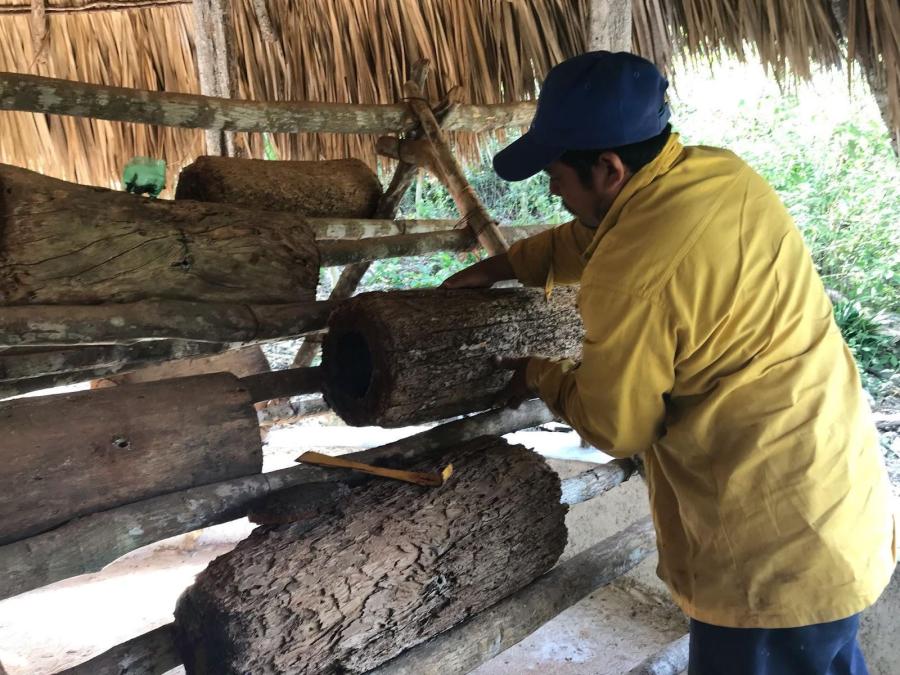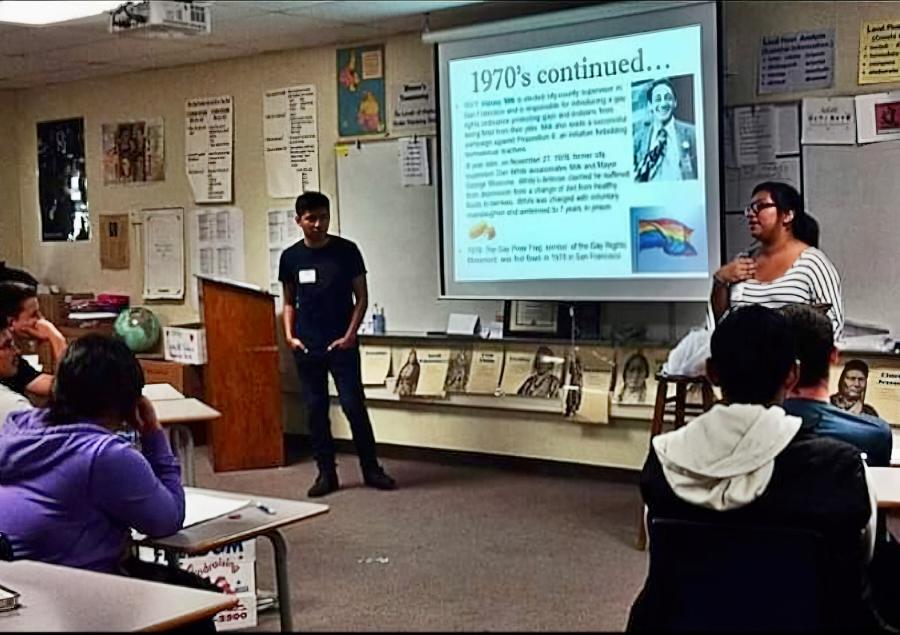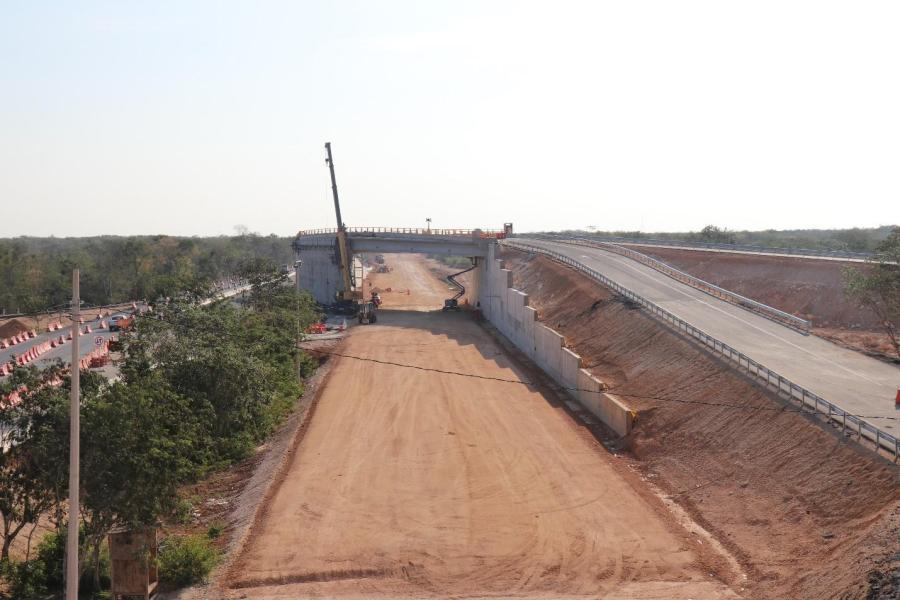Let us be realists and do the impossible" reads the legend on the gateway to the Uxpanapa resettlement zone. "He who does not believe in miracles in Uxpanapa is not a realist" is inscribed on the other side of the entrance. The zone was carved out of one of Mexico's few remaining areas of virgin rain forest in 1974 to accommodate 3,000 Chinantec Indian families displaced from their Oaxaca homeland by the construction of the Cerro de Oro Dam. In this admittedly ambitious project the Mexican government aimed to transform an inaccessible, "underutilized" wilderness in the center of the Isthmus of Tehuantepec into an intensive modern agricultural enclave. Its purpose was to integrate the Chinantecs into the national economy, help to offset the country's basic food deficit and serve as a model for increasing productivity on the tropical southeastern frontier.
Fourteen years later, Uxpanapa's initial vision of a vast mechanized garden in the jungle is an impossible dream, based on unfounded assumptions about the ease of tapping the rain forest's potential via capital-intensive technology and cropping systems devised for more temperate regions. After a disastrous attempt at large-scale mechanized rice cultivation, the Uxpanapa development agencies have shifted the emphasis from annuals to cattle and rubber as a potential way to salvage a project which proved almost immediately to be an expensive mistake in economic, environmental and human terms. In response to short-term economic imperatives irreplaceable natural resources have been destroyed without even coming close to the desired production goals. Even worse, the dislocated Chinantecs have served as little more than guinea pigs in ill-conceived agricultural experiments, condemned by default to eking out a precarious living from rudimentary subsistence cultivation in the jungle.
When the project was in its planning stages, in the early 1970s, critics cautioned against both the likelihood of needless environmental devastation and the obvious stress on indigenous culture that would result from a forced migration program of this type. Ecologists in Mexico and abroad condemned the planned destruction of one of the largest of the country's rapidly disappearing rain forests, being particularly concerned about the speed and extent of the environmental transformations envisaged in view of the fragility and complexity of the tropical ecosystems affected. Anthropologists criticized the lack of effective consultation with the Chinantecs and the emphasis on physical infrastructure and economic priorities rather than less tangible but critical social processes. Some even claimed a continuing policy of deliberate ethnocide or cultural extermination of indigenous peoples on the part of the Mexican government.
The ecologists' alternative proposals were for gradual experimentation with small-scale, locally adapted, multiple resource exploitation that would incorporate traditional Chinantec agricultural expertise. The development agency charged with the Uxpanapa project, the Papaloapan Commission, a semi-autonomous agency under the auspices of the Ministry for Water Resources, was aware of these concerns. However, the perceived need for haste in turning the Uxpanapa into a productive granary, together with agrarian policy and logistical constraints on the specific organization of the relocation, persuaded the commission that these concerns constituted an untried, irresponsible attempt at planned subsistence agriculture, totally incompatible with the Mexican government's economic modernization thrust. Like the majority of Mexican agricultural development agencies, the Papaloapan Commission remained convinced about the ultimate tractability of both natural and social resources to the agencies of technology and capital.
The outcome of the Uxpanapa project underscore the fallacy of this technocratic approach to planned regional and social development. The Papaloapan Commission has failed both to convert the rain forests into a productive agricultural zone and to transform traditional Indian peasants into efficient modern farmers. However, Uxpanapa experience yields important lessons about the impossibilities and possibilities for rational exploitation of the fragile and ephemeral tropical rainforest frontier. This lesson emphasizes the urgency for identifying appropriate strategies for tapping this invaluable resources base without destroying it in the process.
Uxpanapa: The Early Years
Because frontier areas relatively close to the homeland had already been settled by 1973, the location of a suitable site for the Chinantec relocation was a difficult task. The Uxpanapa, with 260,000 ha of relatively uninhabited virgin rain forest, appeared to offer the most attractive option.
Because the region was so isolated the Papaloapan Commission relied primarily on a real surveys for the selection of the relocation zone of 60,000 ha for 3,000 Chinantec families. Stereoplanograph maps from air photos showed that the tops of the trees were level; from this evidence, the commission assumed that vast extensions of flat and fertile land lay beneath the triple-canopy rain forest. Furthermore, the climate resembled that of the Chinantec homeland. Apparently, it would only be necessary to breach the forest with roads and bridges for this immense area to be ideal for resettling the Indians in 12 new communities along a main access corridor.
Nevertheless, the commission could not justify the enormous investments involved in developing such a remote wilderness merely to give a few thousand families a new home. To reverse the national grain shortfall, therefore, rice and maize would be grown in extensive mechanized clearings organized as efficient collective production units. Furthermore, proceeds from logging would help to pay for the expensive infrastructure. Provision was made for the future accommodation of landless peasants from other regions on the remaining 200,000 ha.
However, once the initial mechanized clearings were made in an irregular strip along the new dirt access road, the terrain proved to be rolling and rugged. The soils, which are mostly on limestone, acidic and without nutrient once the standing vegetal cover is removed and leaching accelerated.
Thus, contrary to initial expectations, Uxpanapa was not suited to the cultivation of annual crops. In the first few years of agricultural production, the average yields of all annual grown under mechanization (except one small area of chili) were too low to recover production costs.
The rice program in particular illustrated the problems inherent in transferring temperate technology into the humid tropics. Harvesting equipment broke down, land preparation was delayed, the crop was ridden by fungus disease and flattened by high winds and initial soil fertility declined sharply. These problems were compounded by labor shortages while many Chinantecs delayed relocation due to holdups in the dam completion schedule and unfavorable reports about the resettlement zone from the first migrants. Furthermore, effective agricultural extension was lacking - a critical omission given the Chinantecs' inexperience with mechanized agriculture, their suspicions about the collective system and resentment over the loss of production autonomy. After repeated equipment failures, the Chinantecs refused to harvest the rice by hand, angry at their exclusion from the decision-making process and the government's failure to deliver the promised prosperity. Given this climate of mistrust and hostility, it is small wonder that the Chinantecs have tended to resist participation in new project ventures and that relations with the engineers in charge have at times deteriorated to the confrontation point.
By 1978, the Uxpanapa agricultural program was an obvious failure, having incurred astronomical debts to the agricultural credit bank due to a complex combination of environmental, technical, organizational and social constraints on production. Of the 10,000 ha initially cleared for mechanized annual cultivation, between 30 and 80 percent was left unplanted. In addition, recuperation rates were less than one-third of production costs.
Uxpanapa Today
Finally realizing that the Uxpanapa is more suited to perennial tree crops and pasture than to annual grains, the Papaloapan Commission has elected to emphasize rubber and cattle production as a potential means of salvaging a project based on completely erroneous premises. Indications are that the first plantations now coming into production are yielding high quality latex. A processing plant is almost completed, and the Papaloapan commission and the national rubber agency have recently agreed to expand the area by 2,000 ha, despite severe constraints on production.(1)
Livestock has become increasingly important in the Uxpanapa, although the production system is far from efficient.(2) However, only a relatively few Chinantec belong to the official credit groups for collective cattle operation, preferring to build small herds on an individual basis financed modestly through their own efforts, for example from casual farm labor.
The most severe constraint on the development of viable agricultural enterprises in the Uxpanapa is the condition of the "all-weather" access road, which has deteriorated to the point that travelers must endure at least four hours of bone-shaking over potholes and ruts in order to reach the more accessible Chinantec settlements. Unfortunately, due to severe public sector budget cutbacks as a result of the current national financial crisis, no funds are available for road maintenance and further deterioration is inevitable.
To date, the majority of the resettled Chinantecs derive little if any income from project activities, barely subsisting from traditional slash-and-burn cultivation, particularly in those communities without agricultural soil or suitable pasture land where the only resource is the rain forest itself. Indemnifications received for assets left behind in the homeland have been spent long ago in the struggle for bare survival in Uxpanapa's harsh environment, except for the few shrewd enough to make successful investments in cattle, small mercantile or trucking operations. However, while the majority of the Chinantecs still blame the Mexican government for burying them in a remote, unproductive jungle, the younger generations seems to be taking the initiative in making the best of things.
Ecocide and Ethnocide? Lessons from the Uxpanapa
Forced migration inevitably involves stress, even under the most favorable conditions. Although the Chinantec relocation in the Uxpanapa was far from ideal, neither did it constitute ethnocide, deliberate or otherwise, as critics of the project had predicted.
Although Chinantec culture has changed considerably, it has not disappeared. Traditional dress is rarely worn now. However, the Chinantec language remains the dominant medium of communication in most families and in the conduct of everyday community affairs. Chinantec traditions also persist in slash-and-burn cultivation and indigenous adaptations to failed mechanized technology, as well as in complex garden associations planted in the solar (house yards). Traditional beliefs about illness and curing practices still predominate, partly because of the scarcity and expense of modern medical facilities.
Many elements of Chinantec social structure are being modified in the Uxpanapa, as younger, bilingual community leaders, better equipped to deal effectively with the agrarian bureaucracy, increasingly take over from the traditional elders. These new leaders are no longer content to be powerless victims of the government's agricultural mistakes.
These positive signs of cultural resilience do not condone the Papaloapan Commission's treatment of the Chinantecs, which has consistently been based on a technocratic, elitist approach, in which the Indians are treated as just another resource to be managed. The lesson from this experience is clear in both human and economic terms: locally appropriate projects designed for the beneficiaries have a greater chance of success than externally conceived plans wherein people are expected to change to conform to blueprints.
Unfortunately, the Uxpanapa experience is not unique in the four decades of Mexico's extensive experiments with state-directed agricultural development and colonization in the humid tropical lowlands. The overall unsatisfactory record of such ventures indicates little evidence of learning through past mistakes. The highly centralized and rigidly hierarchical nature of the Mexican bureaucracy tends to limit accountability for poor project performance and to encourage abrupt discontinuities in policies and programs.
However, at this juncture, the ongoing Mexican agricultural shortfall and the continuing need for firm restraint in public sector spending in the wake of the national debt crisis may of necessity lead to more focused and efficient programs. The biologists continue to maintain that agricultural development in tropical rain forests such as the Uxpanapa must be reoriented away from large-scale, capital-intensive projects predicated on transferred technology to small-scale, flexible, locally adapted systems based on ecological principles derived from traditional agro-ecosystems. Hundreds of species with potential use value have been identified in the Uxpanapa. It has been suggested that the remaining forests be cleared in a patchwork pattern, so that each colonizing family could grow enough for self-sufficiency, while an intensive research program identify the most profitable commercial options without irreparably destroying the fragile environmental balance.
In some respects, the piecemeal approach has already occurred in the Uxpanapa by default, as the search for viable economic strategies continues. However, any small gains have been achieved at high investment, environmental, opportunity and social cost, while the developmental risks have been borne by the Chinantecs. It remains to be seen whether the lessons learned from the Uxpanapa about the imperative of employing both environmentally and culturally appropriate technology can be incorporated in future rational and balanced exploitation of Mexico's rapidly dwindling tropical rain forests.
Notes
1. Due to the scarcity of flat land, plantations are small and scattered in irregular plots over a large area, served by poorly maintained feeder roads such that turn the transportation of the highly perishable latex into a critical bottleneck. Furthermore, many plots have irregularly sized, poorly pruned and thinned trees. These problems, together with the low world price of rubber, virtually guarantee deficit production, although this is offset to some extent by the labor-intensive nature of cultivation, which increases the potential for year-round employment for some Chinantecs
2. Unfortunately, the progressive destruction of tropical rain forests for inefficient cattle rearing has become a dominant motif in the humid tropical lowlands throughout Central and South America. Both international and domestic funding agencies give enthusiastic support to rainforest destruction, in response to changing dietary patterns and the increasing internationalization of peripheral economies.
Article copyright Cultural Survival, Inc.




